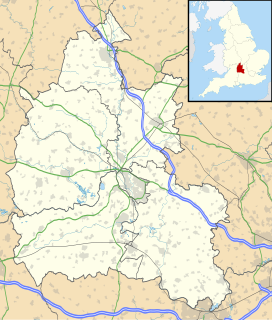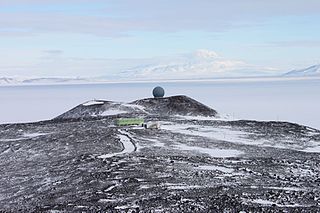This article has multiple issues. Please help improve it or discuss these issues on the talk page . (Learn how and when to remove these template messages) (Learn how and when to remove this template message)
|
The Radio Research Board was formed by the Department of Scientific and Industrial Research in 1920. The Radio Research Station (1924 – 31 August 1979) at Ditton Park, Near Slough, Berkshire, England was the UK government research laboratory which pioneered the regular observation of the ionosphere by ionosondes. In continuous operation from 20 September 1932, it applied the ionosonde technology for the early developments which led to the British Chain Home radar system, operational during World War II. [1]

Ditton Park, Ditton Manor House or Ditton Park House was the manor house and private feudal demesne of the lord of the Manor of Ditton, and refers today to the rebuilt building and smaller grounds towards the edge of the town of Slough in England. A key feature is its centuries-old moat which extends to most of the adjoining lawns and garden. Park areas extend to the north and west of the moat.

The ionosphere is the ionized part of Earth's upper atmosphere, from about 60 km (37 mi) to 1,000 km (620 mi) altitude, a region that includes the thermosphere and parts of the mesosphere and exosphere. The ionosphere is ionized by solar radiation. It plays an important role in atmospheric electricity and forms the inner edge of the magnetosphere. It has practical importance because, among other functions, it influences radio propagation to distant places on the Earth.

An ionosonde, or chirpsounder, is a special radar for the examination of the ionosphere. The basic ionosonde technology was invented in 1925 by Gregory Breit and Merle A. Tuve and further developed in the late 1920s by a number of prominent physicists, including Edward Victor Appleton. The term ionosphere and hence, the etymology of its derivatives, was proposed by Robert Watson-Watt.
In 1965, it was renamed the Radio and Space Research Station, to reflect its increasing role in space research. In 1974, it became the Appleton Laboratory, in honour of Sir Edward Victor Appleton, who had received the 1947 Nobel prize for his work on the ionosphere and who had long been associated with the station's research. In 1979, the laboratory merged with the Rutherford Laboratory to form the Rutherford Appleton Laboratory and over the next three years moved from Ditton Park to Chilton, Oxfordshire.

Sir Edward Victor Appleton was an English physicist, Nobel Prize winner (1947) and pioneer in radiophysics. He studied, and was also employed as a lab technician, at Bradford College from 1909 to 1911.
The Rutherford Appleton Laboratory (RAL) is one of the national scientific research laboratories in the UK operated by the Science and Technology Facilities Council (STFC). It began as the Rutherford High Energy Laboratory, merged with the Atlas Computer Laboratory in 1975 to create the Rutherford Lab; then in 1979 with the Appleton Laboratory to form the current laboratory.

Chilton is a village and civil parish in the Vale of White Horse about 3.5 miles (5.6 km) southwest of Didcot. The parish was part of Berkshire until the 1974 local government boundary changes transferred the Vale of White Horse to Oxfordshire. The 2011 Census recorded the parish population as 894.





